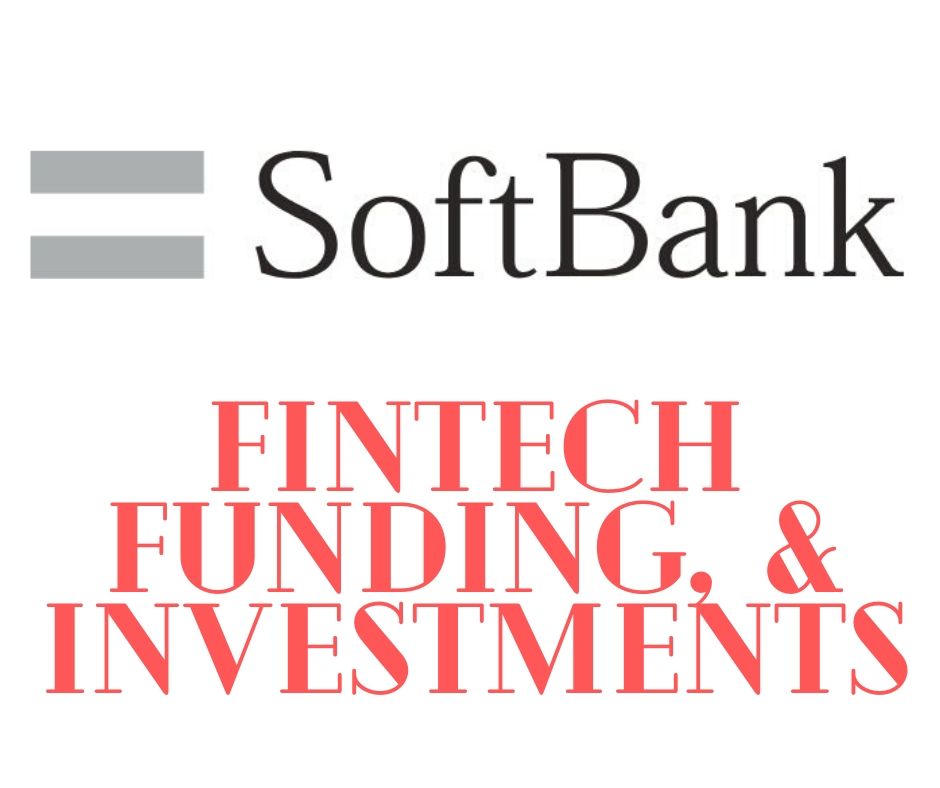Softbank Fintech Funding Investment | Fintech Investment
- 28 June 2020 | 1220 Views | By Mint2Save

SoftBank Group Corp., as we know it, is a Japanese multinational conglomerate headquartered in Tokyo, Japan. It owns stakes in multiple companies around the world and also owns Vision Fund, the world’s largest technology-focused venture capital fund, with over $100 billion in capital. At the core of it, SoftBank is a multinational corporation focused on broadband, fixed-line telecommunications, e-commerce, internet, technology services, finance, media and marketing, and other businesses. The company operates through four major segments: mobile communications, sprint, fixed-line telecommunications, and internet.
Among its many businesses, SoftBank also generates and sells electricity from renewable energy sources, provides payment processing and invoice processing services for businesses, distributes voice/video/data over various media, operates IT information sites, provides solutions and services for online businesses, and operates online games and software downloads.
SoftBank’s corporate profile includes companies such as Japanese broadband company SoftBank BB, data center company IDC Frontier, gaming company GungHo Online Entertainment, and the publishing company SB Creative. SBI Group, a Japanese financial services company, is also a part of SoftBank’s profile. Ymobile Corp. and Wireless City Planning (WCP) are the telecommunication subsidiaries of SoftBank. SoftBank also operates the SoftBank Capital, a US-based VC company. SoftBank also has its presence in the eco-power industry through its SB Energy subsidiary. In addition to these, it has various partnerships in Japanese subsidiaries of foreign companies such as Yahoo!, E-Trade, Ustream.tv, EF Education First, Morningstar, Alibaba Group, and Sprint Corporation.
What companies has SoftBank invested in?
SoftBank has invested hundreds of millions of dollars in technology-forward companies since 2008. Up until last year, SoftBank had backed a host of established tech firms such as Nvidia, the We Company, Slack, Uber, and ARM. SoftBank has also invested huge amounts in less-known yet promising startups around the world. In India, SoftBank has backed Delhivery, Grofers, Paytm (and Paytm Mall), FirstCry, Policy Bazaar, Ola (and Ola Electric), Automation Anywhere, Snapdeal, OYO, Flipkart, Uber, Lenskart, Grofers, Hike Messenger and many more.
As of today, SoftBank has made a total of 209 investments in businesses across the globe, with their most recent investment (worth $19.5 million) in Splyt on 17th June 2020. Softbank has also exited from a few investments, most notable ones include Wirecard, Alibaba Group, Boston Dynamics, Hosuing.com, and Super League Gaming. SoftBank invests in notable shares in the Internet, Mobile and Telecommunication, Mobile Software and services, and e-commerce companies.
How does SoftBank Vision fund work?
SoftBank’s investment vehicle is the Vision Fund – a $100 billion fund with the mission of investing in late-stage technology start-ups that will revolutionize the future of business. SoftBank Vision Fund invests in a variety of industries such as consumer, enterprise, financial technology, frontier technology, healthcare technology, real estate, and logistics. Other industries in which the company invests include artificial intelligence, Internet of things, robotics, and cloud technologies.
Who are the investors in SoftBank Vision Fund?
The first SoftBank Vision Fund was started in 2017 and was backed by investors such as Apple Inc., Foxconn, Qualcomm, Sharp, and sovereign wealth funds from nations such as Saudi Arabia and the United Arab Emirates. In 2019, SoftBank announced a second fund for investing in companies focused on designing and producing the next-generation enterprise using artificial intelligence. By using profits from the first fund along with other company assets, SoftBank itself has invested $38 billion into the second fund.
Combining that contribution with other investors’ assets brings the fund to $108 billion. Several investors from the original fund have invested in the second fund and companies such as Goldman Sachs and Standard Charter have also been added to the list of investors in the Vision Fund. Kazakhstan has also joined the second Vision fund by contributing through its sovereign wealth fund. As of December 2019, the Vision Fund had invested in stocks of 88 companies worldwide.
SoftBank Vision Fund isn’t just the world’s largest private equity fund ever raised, it is also one of the most complicated. Around 75% of Vision Fund capital comes from external LPs like sovereign wealth funds of Saudi Arabia and Abu Dhabi. Each of their investments in structured in two parts:
- Common – The partners receive a percentage of positive returns according to investment principals. The risk remains unless the investment performs well. Thus, this component is entirely on payment by result basis.
- Preferred – The partners receive a 7% annual coupon on their investment over and above the common returns. This is a high-yield fixed return.
Each limited partner has a 60-40 ratio between the common and preferred return, thereby tying the coupon value upwards of $40 billion. Thus in most cases, some of the 7% annual coupon on invested capital comes from those same limited partners (LPs). SoftBank created the ‘coupon’ concept for investors to agree to bite on such an out-sized fund. Later on, it assumed the coupon could be entirely paid for via distributors – which has not been the case till now. Only 25% of the coupon payments have come from distributors and the rest has come from capital calls.
As a result, outside LPs are paying themselves and SoftBank Group is paying them even more on a percentage basis, since it only has traditional equity in the fund. From a practical perspective, SoftBank’s Vision Fund might not really invest the entire $100 billion into outside tech companies. Based on its working model, if the fund is profitable, the profit will be distributed but if the fund is in red, the loss will be shared among investors. The fixed return, however, will be unchanged in either case.
Is Fintech a good investment?
The Vision Fund, given its large cheques, has become a major investor in Fintech companies. SoftBank has invested in multiple sectors of financial services companies including payments, insurance, and real estate. Its largest chunk of investments in this domain is lenders and lending technology providers. In addition to its Vision Fund, SoftBank has other entities through which it makes Fintech investments. Some investments made by SoftBank in this domain include Chinese insurer Ping An’s subsidiary OneConnect and consumer lender SoFi.
Is SoftBank a Good Investment?
During its inception, SoftBank was misunderstood and a significantly undervalued company run by a phenomenal founder. Considering the sheer size of the first Vision Fund, the gap between the value of SoftBank’s assets and where the stock was trading had widened. Since the beginning, despite its appreciation, SoftBank’s stock always traded at a discount to its fair value. After the recent WeWork debacle (whose business model imploded thanks to low office space utilization due to COVID-19) SoftBank lost a large portion of its investment. This caused investors to question the future of SoftBank’s assets and more specifically its debt.
Keeping that in mind, SoftBank’s plan to start an even larger Vision Fund – by contributing $38 billion to this second fund, a large sum of money even for SoftBank to invest – has become a matter of concern for many investors. Though SoftBank’s discount to fair value could afford the first fund to perform poorly, investors won’t have that luxury if both funds collapse. Any shortfall of capital for the fund will be fulfilled by SoftBank for which it would have to borrow tens of billions of dollars, despite owning only one cash-generating asset, Japan Telecom.
Japan Telecom also has its own problems – it will soon have a new competitor that may pressure its profitability, thus reducing the earnings and valuation of SoftBank. To say the least, if SoftBank’s debt skyrockets, a 50% discount to fair value will become a permanent feature of the company’s stock. Thus, currently, SoftBank may not be a lucrative investment option as it has the potential to underperform in the market. However, it may be a good pick for value investors.
Venture Capital Investment and Private Equity for Innovation?
Growth in venture capital investment and private equity investment have all helped fuel innovation and investment in fintech. Overall, investment (in Fintech) is also up substantially compared to earlier years. Fintech stocks have grabbed the spotlight as digital technology transforms e-commerce, payment networks, online lending, money transfers, B2B payments, personal finance, and banking. A wave of fintech startups aims to push aside the traditional banks and credit card companies. As consumer spending shifts to online and mobile platforms, there is less need for cash and cheques. There is fierce competition among fintech companies to draw in merchants to payment ecosystems. For some fintech companies, there’s pressure to build out two-sided platforms serving both merchants and consumers.
Is Fintech a Good Investment?

While Fintech companies are evolving, major technology giants are also riding with the Fintech wave. Apple Inc. and Goldman Sachs last year jointly launched a new consumer credit card – The new Apple credit card. Then, there’s Facebook Pay – a payment system works across Facebook, Messenger, Instagram, and WhatsApp. Meanwhile, Amazon.com is getting traction with a digital payment system. In addition, Amazon and Synchrony Financial have partnered to create a credit card for Amazon’s Prime members. Alphabet’s Google is also moving into providing checking accounts for its users. Since its spinoff from eBay, PayPal has expanded from online checkout to mobile payments to peer-to-peer money transfers.
Before the coronavirus outbreak, a wave of consolidation boosted Fintech stocks and private companies. Valuations of fintech companies soared with multiple M&A activities in the domain. Venture capital funding of fintech startups is still rising, especially for startups in payments, e-commerce, online lending, and cloud software. The B2B payment industry is shifting from paper cheques to automated software tools and digital platforms. With the surge of Blockchain technology, a long-term positive impact on fintech stocks is anticipated. In terms of investment, the time seems right to move into Fintech stocks. It is best to invest in fintech companies with intellectual property rights which create barriers for rivals to enter their target markets. Companies that are expanding their market size by creating products and services are also good investment options.
What are examples of Fintech?
Over the last decade or so, Fintech has found its place in the innovation economy. Chatbots, artificial intelligence, blockchain, crypto assets, Robo-advisors, neo-banks, and end-to-end financial processes digitization have become key components of corporate strategies. Digitization is happening all along the value chain but Digital point solutions are just a fine start, not the final destination. Financial companies that rent their assets to tech companies have emerged as banks-as-a-service. They enable any distribution experience to include relevant financial capabilities.
This is challenging for traditional incumbents, who are used to manufacturing products and pushing them at people through sales channels. Instead, consumers now interact with finance at the edges of their experience. Basically, one doesn’t need to shop for finance anymore because it has now come to the point of sale directly. The banks are catching up even though many have lagged already without realizing it. The tech companies are taking a hard turn into finance by directing billions of their website visitors to financial partners and vendors. All in all, Fintech is the future of all finance and banking. It is the consumer behavior, however, that will determine who wins in the long run – all one needs to do is download the right app.









